
Browse an alphabetical list of photographs. These historical images portray people, places, and events before, during, and after World War II and the Holocaust.
<< Previous | Displaying results 551-575 of 2641 for "Photo" | Next >>
Circular label from the suitcase used by Margot Stern when she was sent on a Kindertransport to England. Germany, December 1938.
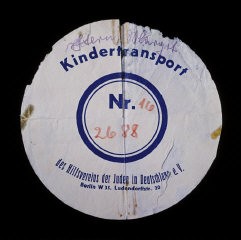
Chiune Sugihara, Japanese consul general in Kovno, Lithuania, who in July-August 1940 issued more than 2,000 transit visas for Jewish refugees. Helsinki, Finland, 1937–38.
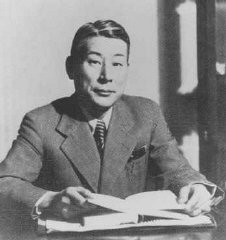
Christoph Probst, a member of the White Rose student opposition group. Probst, arrested and condemned to death by the People's Court, was executed on February 22, 1943.
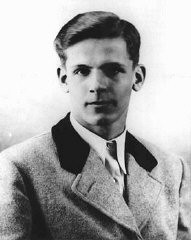
Propaganda played a crucial role in selling the myth of the "national community" (Volksgemeinschaft) to so-called "Aryan" Germans. The photograph on this cigarette card was taken by Nazi propagandist Heinrich Hoffman. It depicts a crowd of people smiling and giving the Nazi salute as a guard holds them back. Written in German, the caption on the back reads, "Every day the same picture: Fans welcome the leader." Beginning in the 1920s, cigarette cards were a popular collectible item in Germany. This card…
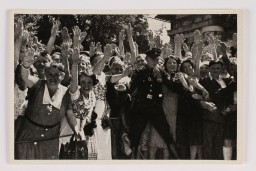
Cigarette card portraying some of the American track and field athletes who competed in the 1936 Olympics in Berlin, Germany. The US team was the second largest to compete in the 1936 Summer Olympic Games with 312 members, including 18 African Americans. Cigarette cards were collectible cards often included in packages of cigarettes into the 1940s.
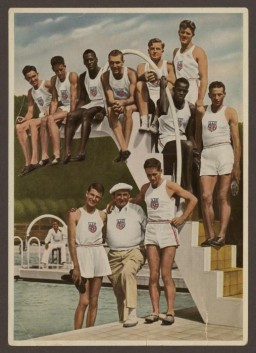
Clandestine photograph, taken by a German civilian, of Dachau concentration camp prisoners on a death march south through a village on the way to Wolfratshausen. Germany, between April 26 and 30, 1945.
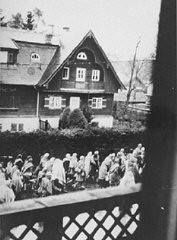
A class for new immigrants in the United States. Postwar.
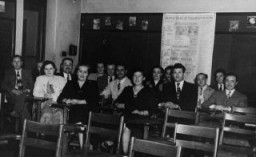
A first-grade class at a Jewish school. Cologne, Germany, 1929-1930.
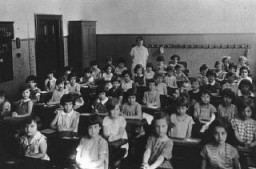
Ruth Kohn (top row, second from left) and her classmates at a school in Prague. Prague, Czechoslovakia, 1928.
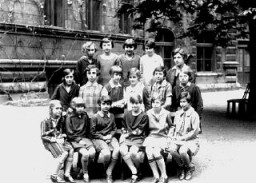
Close-up of corpses piled in the crematorium mortuary in the newly liberated Dachau concentration camp. Dachau, Germany, May 1945. This image is among the commonly reproduced and distributed, and often extremely graphic, images of liberation. These photographs provided powerful documentation of the crimes of the Nazi era.
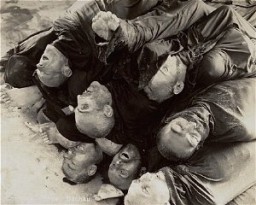
Close-up portrait of Hebrew and Yiddish author Itzhak Katzenelson in the Vittel internment camp. Because he possessed a Honduran passport, Katzenelson and his son were sent to the Vittel internment camp in France. They remained there for a year, during which time Katzenelson continued to write. In April 1944, however, both were deported to their death in Auschwitz. Vittel, France, 1943-1944.
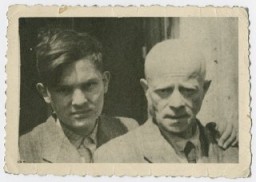
Close-up portrait of Miriam Wattenberg (Mary Berg). Because Mary's mother was American, she and her family were sent from the Warsaw ghetto to Vittel in to be held for possible prisoner exchange. Her diary became the first wartime published eyewitness account in English of life in the Warsaw ghetto and the deportation of its inhabitants to be murdered at Treblinka.
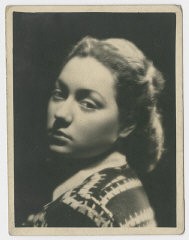
Collage created after the Nazi regime began to force gay and lesbian gathering spaces to close. It was published in the magazine, Der Notschrei. Berlin, March 1933.
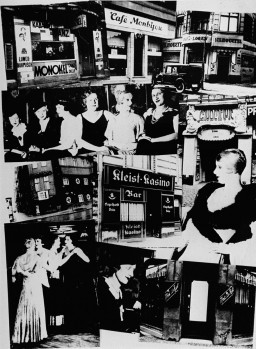
Coffins containing bodies of Jews killed in the Kielce pogrom. Poland, July 6, 1946. The mass violence of the Kielce pogrom drew on an entrenched local history of antisemitism–especially false allegations accusing Jews of using the blood of Christian children for ritual purposes (a charge known as a “blood libel”)–with the intent of discouraging the return of Jewish Holocaust survivors to Poland.
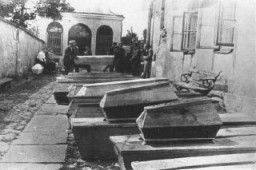
In the International Military Tribunal courtroom, executive trial counsel Colonel Robert G. Storey presents evidence of Nazi intentions to launch an aggressive war.
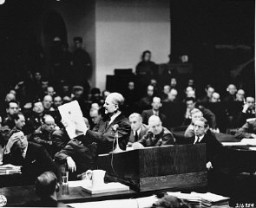
A column of refugees in the Soviet Union, following the German invasion of Soviet territory on June 22, 1941. Soviet Union, between 1941 and 1944.
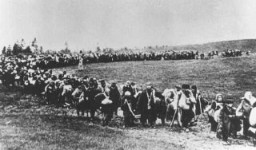
Column of Soviet prisoners of war from the eastern front. Kharkov, Soviet Union, June 18, 1942.

Commandant Arthur Roedl (center) and SS officers visit the Gross-Rosen concentration camp's quarry. Gross-Rosen, Germany, 1941.
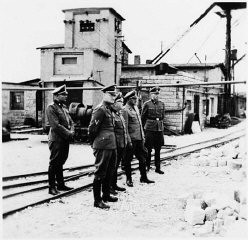
Commemorative postcard with a drawing of barrack 11 of Bergen-Belsen and marking the time the people on the Kasztner train spent in the camp. The Jews from the Kasztner transport lived in two barracks, 10 and 11, inside Bergen-Belsen. (This was probably drawn by the Hungarian artist Robert (Imre) Irsay who himself was on the Kasztner transport.)
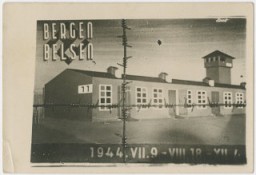
Ernst Thaelmann, leader of the German Communist Party, was detained during a mass arrest of Communists following the fire that virtually destroyed the Reichstag (German parliament) building. Germany, date uncertain.
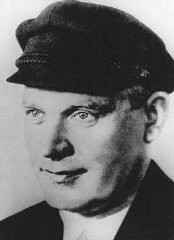
Joseph Levi, a pharmacist and the head of the Jewish community of Komotine, wearing the compulsory Jewish badge. Bulgarian occupation authorities later deported him to the Treblinka killing center. Komotine, Greece, 1942.
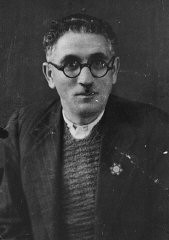
Soon after liberation, women camp survivors prepare food near piles of dead bodies. Bergen-Belsen, Germany, after April 15, 1945.
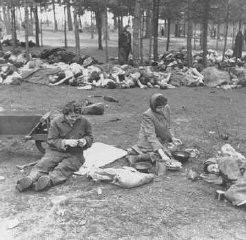
Prisoners receive meager food allocations at the Plaszow camp. Krakow, Poland, 1943 or 1944.
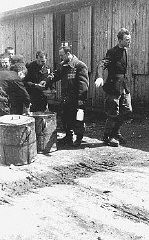
Forced laborers work on the construction of a wall around the Warsaw ghetto area. The Germans announced the construction of a ghetto in October 1940 and closed the ghetto off from the rest of Warsaw in mid-November 1940.
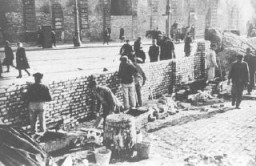
View of the dam being built by forced laborers from the Im Fout labor camp in Morocco. Photograph taken 1941-42.
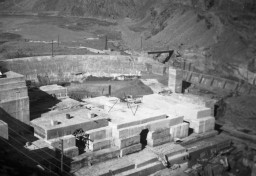
We would like to thank Crown Family Philanthropies, Abe and Ida Cooper Foundation, the Claims Conference, EVZ, and BMF for supporting the ongoing work to create content and resources for the Holocaust Encyclopedia. View the list of donor acknowledgement.